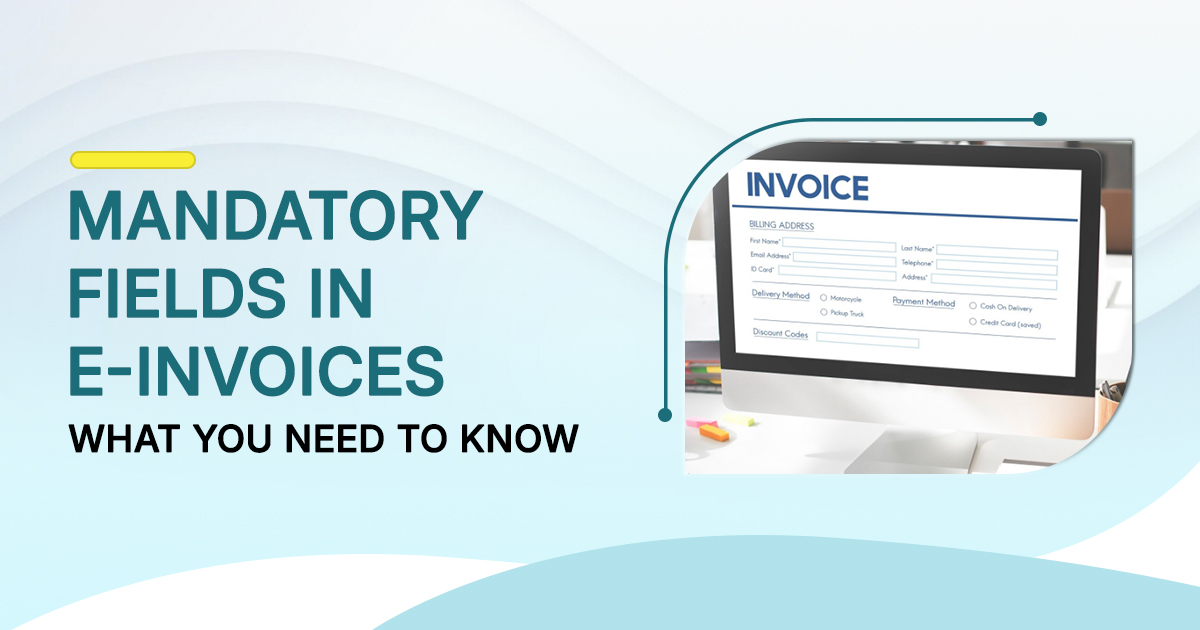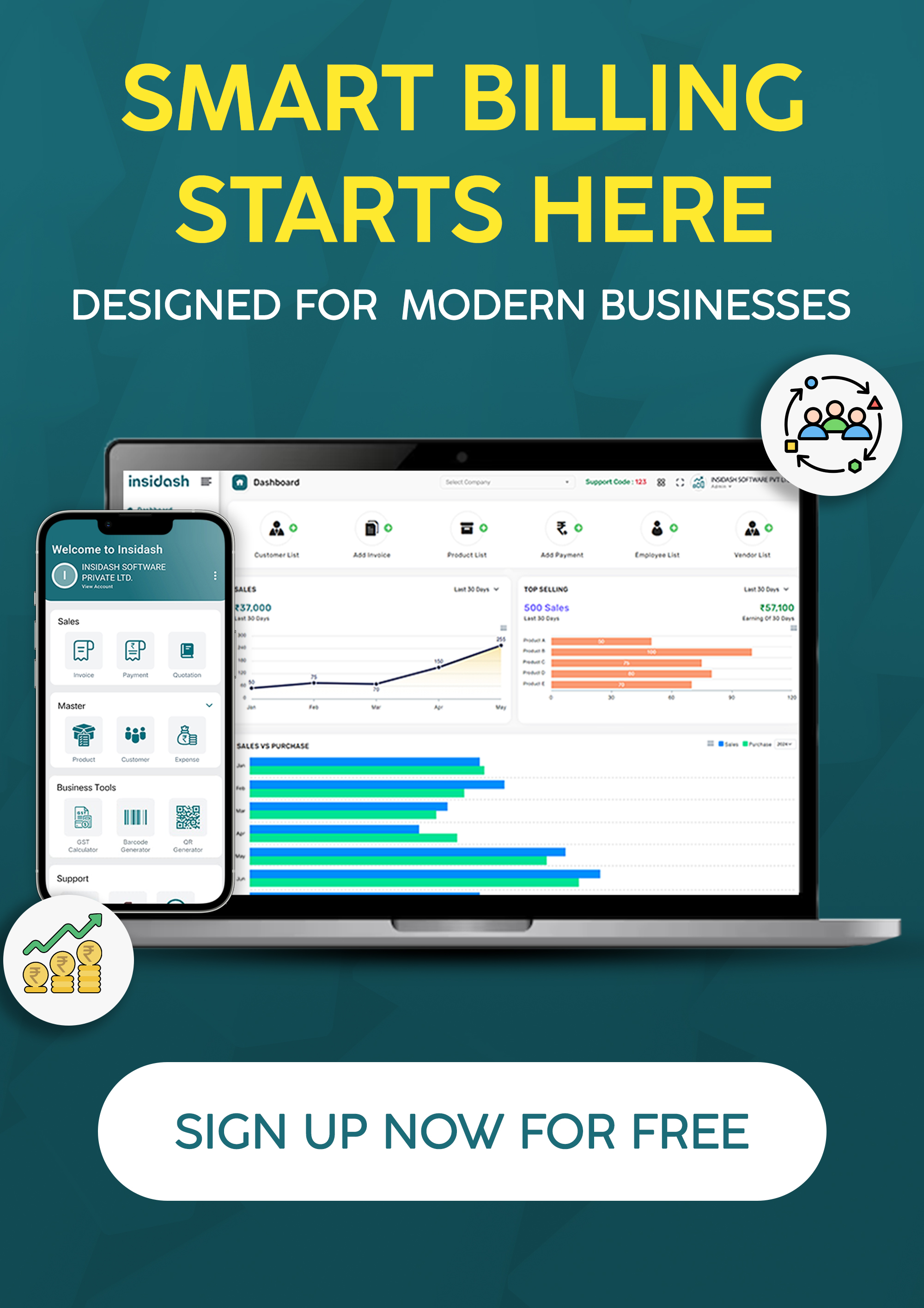Table of Contents1.Introduction 2. What is an E-Invoice? 3. Why Mandatory Fields Are Important 4. List of Mandatory Fields 5. Common Mistakes to Avoid 6. Conclusion |
|
Introduction
With the growing rules & regulations towards digital compliance, e-invoicing has become a standard requirement for many businesses in India. Understanding E-invoice mandatory fields is important not just for avoiding penalties but also for making sure your invoices are accepted without delays or rejections. This guide breaks down what an e-invoice is and the exact details you must include and common mistakes to avoid.
What is an E-Invoice?
An e-invoice is a digitally generated invoice that follows a standard format set by tax authorities. In India, it must comply with GST e-invoicing requirements which make sure that invoice data is reported to the government in real time. The structure is based on the E-invoice schema India which defines the fields, format and validation rules.
Instead of sending invoices only to customers, businesses also submit them to the Invoice Registration Portal (IRP). The IRP verifies the data and issues an IRN and QR code which are unique to each invoice.
Why Mandatory Fields Are Important
Leaving out any mandatory detail can lead to errors, compliance issues or outright rejection of your invoice. Here’s are some below points why they matter:
-
➤ Legal compliance – Every GST-registered business that issues a B2B e-invoice India must include specific details as per the law.
-
➤ Seamless GST filing – Invoices with all required fields sync automatically into GST returns.
-
➤ Faster payment cycles – Clear and accurate invoices speed up approvals.
-
➤ Error prevention – Including GSTIN in e-invoices and other required fields reduces mismatches.
-
➤ Audit readiness – Fully detailed invoices meet E-invoice compliance checks during audits.
List of Mandatory Fields
The following fields are essential for meeting GST e-invoice format rules and each serves a specific compliance and record-keeping purpose. Check them out below:
-
1. Supplier details – Include the supplier’s legal name, complete address and GSTIN. This helps to make sure the tax authorities can verify the identity of the seller issuing the invoice.
-
2. Recipient details – The buyer’s name, address and GSTIN must be included so the invoice can be correctly linked to their GST records and for input tax credit purposes.
-
3. Invoice number – A unique identifier for each invoice, following your company’s numbering system. It helps avoid duplication and maintains proper audit trails.
-
4. Invoice date – The date the invoice is issued in DD/MM/YYYY format. This is important for tracking tax periods and filing deadlines.
-
5. Invoice type – Specifies whether it’s a regular invoice, debit note or credit note. This classification affects how it’s treated in GST returns.
-
6. Item details – Product or service description, quantity, unit price and its HSN code. This level of detail helps to ensure proper tax rate application and avoids classification confusion.
-
7. Tax details – A breakdown of applicable taxes such as CGST, SGST, IGST or Cess values. This helps in transparency and accurate GST reporting.
-
8. Total invoice value – The total before tax and the grand total after adding taxes. This helps to both the buyer and tax authorities verify amounts.
-
9. Shipping details – If goods are being transported it is important to include the delivery address and transport details to comply with movement and logistics regulations.
-
10. IRN and QR code – Generated by the Invoice Registration Portal after validation. The IRN is a unique number for each invoice while the QR code allows quick digital verification.
Common Mistakes to Avoid
Errors in e-invoices can cause invoice rejection such as:
-
➤ Missing GSTIN or using an incorrect one.
-
➤ Wrong HSN codes for products or services.
-
➤ Invalid invoice date format.
-
➤ Mismatched tax amounts.
-
➤ Not including essential fields for e-invoice like IRN or QR code.
-
➤ Delaying uploads past the e-invoice deadline 2025 which can lead to penalties.
-
➤ Using special characters or symbols in mandatory fields that the Invoice Registration Portal cannot process.
-
➤ Entering incorrect recipient details such as address or GSTIN which leads to mismatches in GST records.
-
➤ Typographical errors in invoice numbers, which can cause duplication or invalidation.
-
➤ Not following the GST e-invoice format exactly as prescribed.
-
➤ Uploading invoices in the wrong file format (e.g., PDF instead of JSON as required by the IRP).
-
➤ Omitting transport details in cases where shipping is applicable which can cause compliance issues during goods movement checks.

